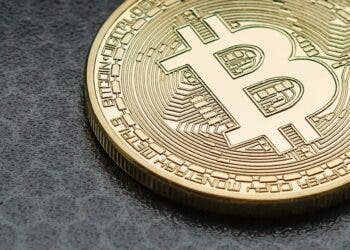A blockchain is a public ledger of all Bitcoin transactions that have ever been executed, the main technological innovation of Bitcoin. Basically, since the first bitcoin was mined, every transaction using the cryptocurrency has been tracked and labeled, with note of the hands that made the exchange. A block is the ‘current’ part of a blockchain which records some or all of the recent transactions, and once completed goes into the blockchain as a permanent database. Each time a block gets completed, a new block is generated. Think of the blockchain as a history of all financial transactions and the block as a individual bank statement. What’s innovative about this is that the blockchain database is shared by all nodes participating in a system – that’s more computing power than Google has. This makes the Bitcoin ledger impossible to forge or destroy, since there are millions of other copies distributed across the whole web. Now, this remarkable financial innovation could be used to thwart corruption.

Epigraph and Factom, both Texas-based tech company, were hired by Honduras – one of the most corrupt country in the world – to develop the country’s land registry ledger system like blockchain. Right now, the land registry is controlled by government officials. They will continue to be so under a blockchain system too, of course, only everything will be transparent. Any ledger whose access is limited can be controlled and manipulated. The police could readily access the data on a blockchain ledger, journalists as well, common Hondurans, even Londoners. It’s all an open, global database.
“In the past, Honduras has struggled with land title fraud,” said Peter Kirby. “The country’s database was basically hacked. So bureaucrats could get in there and they could get themselves beachfront properties.”
“Distributed architecture, immutability and transparency are the three main attributes that allow blockchain-based apps to combat fraud and corruption,” says Abhi Dohal, VP of Business Development at Epigraph.
“No amount of money or threats can undo what’s been done without leaving an auditable trail,” he says.
Why stop here? Blockchain technology can be applied to virtually anything. There’s a company that adds block chain to diamonds to prevent insurance fraud. Every stone has record kept where at least 40 unique data points are stored; information like who the owner is, who was the previous owner, size, shape, security status and so on. You could make blockchain for voting records or track where a politician’s money comes from. Nike, for instance, could add a block for every sold pair of shoes – you could then track the code through the chain to see where your shoes were manufactured and whether or not they were made in ethical conditions (i.e. no child labor).
One way to see Blockchain is like the world’s biggest file cabinet. The problem with blockchain, however, is exactly this: its size. If it’s going to pick off, we’re going to need a lot more computing and storage power. Then, there are some things that have to be kept private, and rightfully so these shouldn’t be blockchained.
Counterfeiting and corruption could be very, very difficult to do and get away with it, though. Bankers might hate it. There are nearly infinite uses for blockchain technology in our everyday lives; from tracking your luggage to verifying the origin of products. Let’s wait and see.






